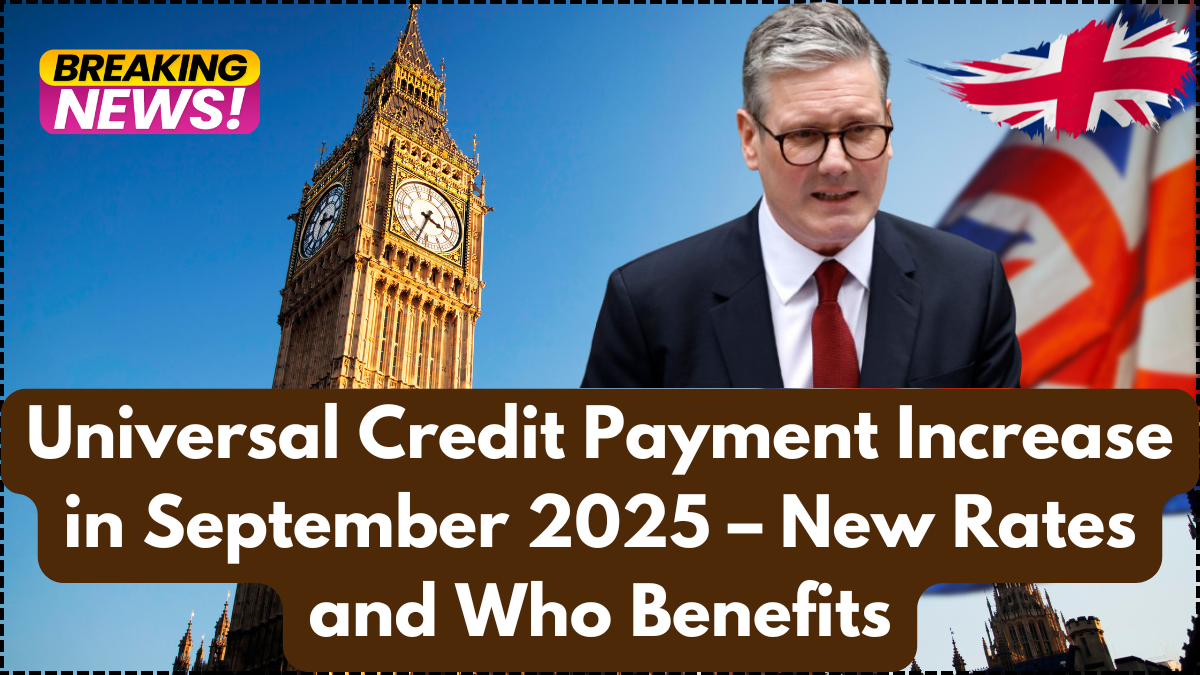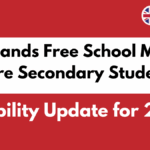Starting September 2025, millions of UK households receiving Universal Credit will see a rise in their monthly payments. This Universal Credit Increase 2025 is part of the government’s annual benefits adjustment to keep up with living costs. The Department for Work and Pensions (DWP) has confirmed these changes, aiming to provide more robust financial support amid ongoing economic pressures.
The Universal Credit September update includes revised payment amounts, adjusted thresholds, and recalibrated support for different claimant groups. These updates reflect inflation trends and a strategic policy shift to enhance income security for low- and middle-income families.

New Universal Credit Rates from September 2025
The revised rates apply to all Universal Credit components, including standard allowances and additional elements for children, disabilities, and housing costs. Here’s a breakdown of the key changes:
| Claimant Category | Previous Monthly Rate | New Monthly Rate (Sept 2025) |
|---|---|---|
| Single under 25 | £264.70 | £278.90 |
| Single 25 or over | £335.00 | £352.40 |
| Couple both under 25 | £417.60 | £439.90 |
| Couple one or both 25 or over | £525.70 | £553.10 |
| First child (born before April 2017) | £315.00 | £329.50 |
| First child (after April 2017) | £270.00 | £282.30 |
These adjustments signal an average rise of 5.5% across the board, in line with the most recent inflation statistics released earlier in 2025. While not a dramatic overhaul, the increase provides a buffer for claimants facing higher household costs.
Who Stands to Benefit from the Universal Credit September Update?
The primary beneficiaries of the Universal Credit Increase 2025 include low-income workers, families with children, and those with limited capability for work due to illness or disability. Lone parents, carers, and individuals receiving housing support will also notice enhanced monthly amounts.
This year’s adjustment particularly supports working claimants, as the work allowance thresholds have also been increased slightly, allowing recipients to earn more before their Universal Credit begins to taper off. This aligns with broader UK benefits 2025 strategies designed to make work pay and reduce dependency while still offering adequate safety nets.
Key Drivers Behind the 2025 Universal Credit Adjustment
Several factors influenced the recalibration of Universal Credit in 2025:
- Rising inflation: With food, energy, and housing costs still climbing, the government faced pressure to respond with real-term benefits growth.
- Cost-of-living response: Building on previous support schemes, the DWP aimed to further cushion vulnerable groups.
- Labour market shifts: As part-time and gig economy roles remain prevalent, benefit structures are adapting to reflect these realities.
The Universal Credit September update reflects not just a numeric change, but a policy direction that acknowledges the evolving socio-economic landscape.
What Claimants Should Do Next
There’s no need for existing Universal Credit recipients to reapply. The new rates will be applied automatically from their September 2025 payment date. However, claimants are encouraged to review their online account to verify updated figures, especially if their circumstances (e.g., income, household size) have recently changed.
Staying informed through official DWP communication and consulting local benefit advisers can help ensure that eligible individuals are not missing out on additional elements or changes that could increase their entitlement.
FAQs About the Universal Credit Increase 2025
What is the Universal Credit Increase 2025?
The 2025 increase is an inflation-adjusted rise in the monthly Universal Credit payments starting in September. It’s aimed at helping claimants manage rising living costs.
Who qualifies for the increased payments?
Anyone currently receiving Universal Credit will benefit, with additional gains for those with children, disabilities, or housing needs.
Will I need to reapply to receive the higher rates?
No. The changes will be applied automatically to your existing claim by the DWP.
How do I check if my payment has increased?
Log into your Universal Credit online account to review your September statement, which will reflect the new rates.
Can I receive more if my income has changed?
Yes. If your earnings have decreased or your household has grown, update your details in your account to ensure maximum eligibility.
Click here to learn more
Aanchal is a skilled content writer with a flair for creating compelling and engaging stories. With a keen understanding of her audience, she crafts content that informs, inspires, and connects on a deeper level. From blog posts and articles to marketing copy, she brings both creativity and precision to every piece. Her expertise helps our brand communicate with clarity and leave a lasting impression.



